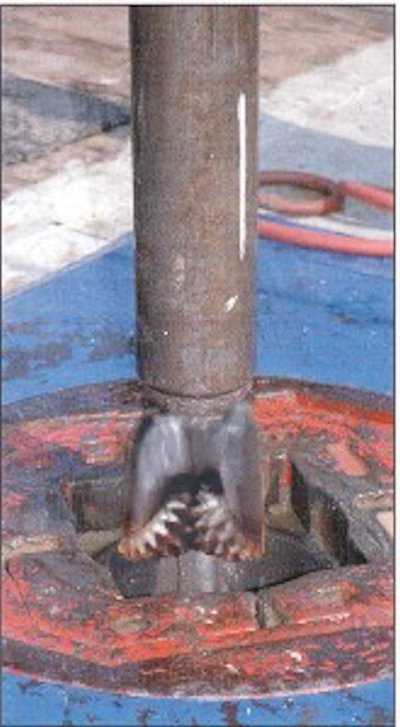The Manual Drilling Process
This method involves the use of a rotary table and kelly to rotate the drill string. The process begins with the assembly of the drill components and continues through the initiation of the drilling operation.
Process: The process requires close coordination, regular equipment checks, and manual handling, especially during pipe connections and bit changes. The following steps outline this traditional method:
- Assemble the Drill Bit and Bottomhole Assembly (BHA): A surface drill bit is attached to a drill collar, which adds weight and stability. This collar is then connected to the kelly, a square or hexagonal pipe that fits into the rotary table.
- Lower the Drill String: The driller uses the drawworks to slowly lower the drill string into the wellbore, guiding the bit through the rotary table opening.
- Set the Kelly Bushing: The kelly bushing is inserted into the rotary table drive bushing, locking it into place. This allows the rotary table to transfer rotational force to the kelly and the entire drill string.
- Engage the Mud Pump: The mud pump is activated to start circulating drilling fluid down the drill string and back up the annulus. The driller checks for any fluid leaks or irregular pressures that might signal a problem.
- Initiate Rotation: The rotary table is engaged, causing the kelly and attached drill string to rotate. This rotation enables the bit to cut into the rock at the bottom of the well.
- Begin Drilling Operation: With fluid circulation and rotation underway, the driller lowers the bit to the bottom of the hole and begins the actual drilling process, advancing the well depth.
Potential Hazards: The rotary table system involves manual processes and floor-level machinery, which increases certain risks:
- Increased struck-by and caught-between hazards from using the kelly, rotary table, and spinning chains on the rig floor.
- More manual handling of heavy equipment like the kelly and kelly bushings, leading to muscle strains and sprains.
- Greater floor congestion due to tongs, spinning chains, and kelly movement, raising the chance of slips, trips, and falls.
- Longer exposure time to moving machinery during pipe connection and disconnection processes.
Safe Practices: To reduce these hazards, crews must follow safe work practices, such as:
- Implement an effective pipe handling, make-up, break-out procedure:
- Stand outside the tong swing radius when breaking pipe.
- Use proper tong latching techniques and use proper hand and finger placement on tong handles.
- Stand clear of the rotary table when it is rotating.
- Use a tail rope on the spinning chain to keep hands away.
- Use proper lifting technique.
- Hoist slowly to limit pipe momentum.
- Use mechanical lifting aids such as a rig floor winch.
- Use tail rope to guide as necessary.
- Comply with the Blowout Prevention Program.
Knowledge Check Choose the best answer for the question.
4-8. What type of injury may occur due to lifting or trying to control the movement of drilling equipment?
You forgot to answer the question!

